Menacing monsters from folklore and beyond!
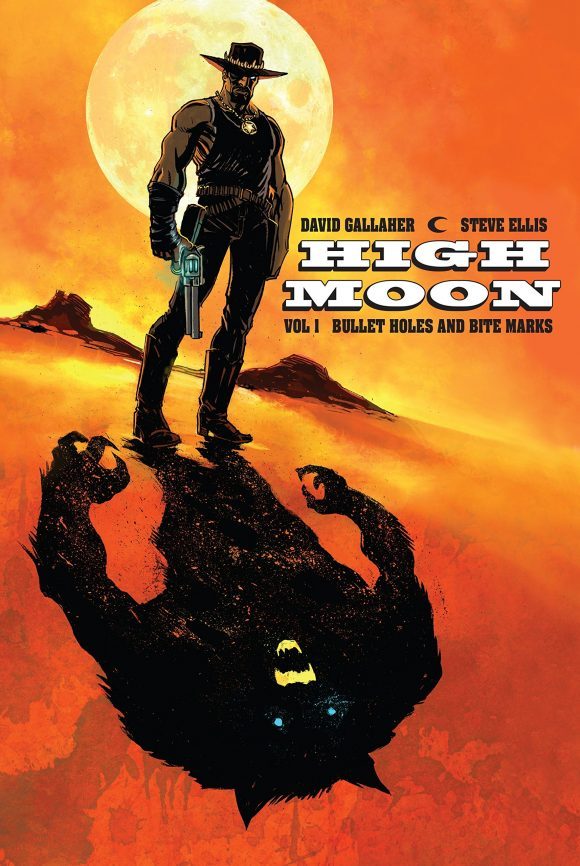
Take cover. A full moon is upon us this weekend — and David Gallaher and Steve Ellis are back with another list that celebrates the things that go bump in the night.
Why? Because a brand-new, remastered edition of his and artist Steve Ellis’ werewolf Western High Moon is out now from Papercutz’s Super Genius imprint.
Dig it:
—
By DAVID GALLAHER
Silver bullets, stagecoaches, train robberies and tin stars. We’re all familiar with the rustic trappings of the Western. But what separates cowboy fiction from a badass weird Western? Having menacing monsters to fight, that’s what. When Steve Ellis and I conceived of High Moon, we drew upon the most terrifyingly bizarre creatures we could think of from folklore.
Folklore takes our abject pain and human suffering and transmits it in the form of oral narratives, cultural traditions. These are stories that symbolize our love, desire, passion, fertility and violence. Over the centuries, these frightening stories have brought together communities and cultures, influencing our music, our literature, our myths, and even the games we play. With another full moon this weekend, Steve Ellis and I thought we’d showcase 13 of our favorite sinister and savage critters from folklore:
—
Werewolves. Gifted with unusual speed, strength, reflexes and senses, these shape-shifting savages have been depicted in countless comics, movies and television shows. Often associated with the full moon, werewolves have a long and rich history that dates back to ancient Greece. In the Middle Ages, many Europeans believed wolves were tools of the devil and the animals were ruthlessly hunted. Epileptics and the mentally ill were often convicted of being werewolves, and murdered because of it.
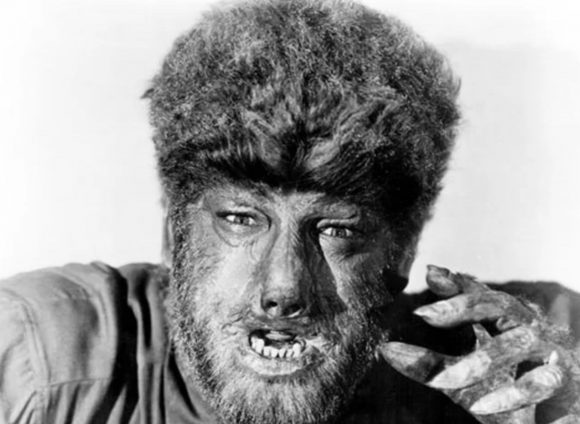
Lon Chaney
—
Fomorians. In Irish-Celtic mythology, the Fomorians are a race of demonic giants, ancient occupants of Ireland. Visually they eschew the sort of symmetry you’d find common in most monsters. Like snowflakes, none of them are exactly alike. These giant creatures have multiple eyes, multiple mouths and extra extremities. These beasts, frequently associated with drought, plague and crop-blight, were soundly beaten when the Irish race of gods arrived. Their mutated and asymmetrical appearance inspired the visceral illustrations provided by Steve in High Moon.
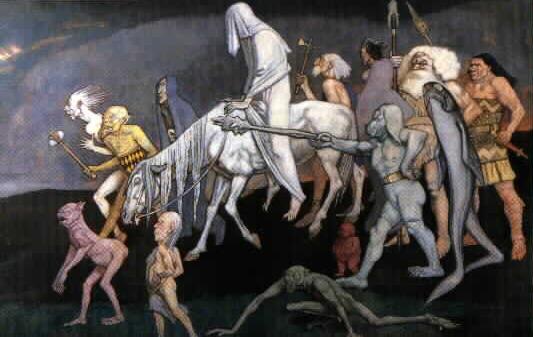
Duncan
—
Golem. In Jewish folklore, a golem is a humanoid automaton magically created from inanimate matter. Typically, the golem is constructed out of clay and brought to life through powerful Hebrew rituals to help protect the Jewish community. My introduction to golems came from the fantasy role-playing game Dungeons & Dragons. Casting aside the heroic Judaic origins of the golem, these magical and silent constructs are made of inert matter animated by high-level spell-casters. Virtually any material can be used to create a golem — so during any given adventure you could fight a flesh golem, a stone golem, a glass golem or a bone golem. The esoteric and cryptic nature of these creatures makes them some of the most fascinating monsters in folklore.
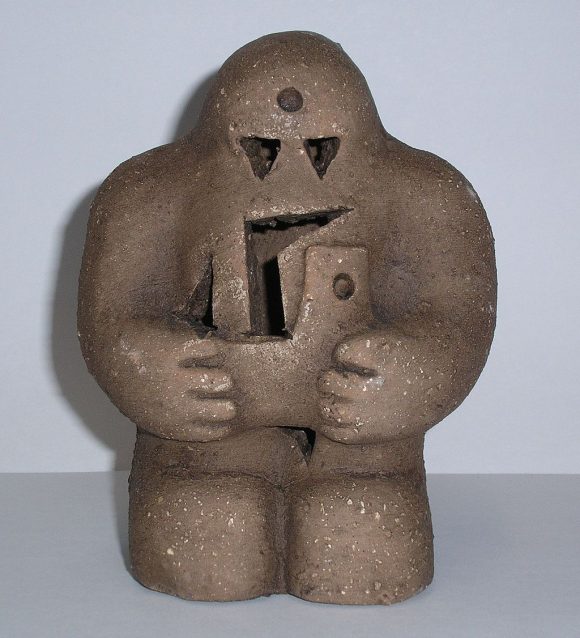
—
Beast of Gévaudan. The Beast of Gévaudan is a real-life wolf-monster that slaughtered nearly 300 youths and women in the south of France from 1764 to 1767. Historians claim that rabid wolves, or a hybrid of a wolf and a domestic dog, had attacked the victims in the historical region of Gévaudan. The brutal attacks often left victims with their throats torn out or heads gnawed off. While numerous villagers survived the attacks, many of them were gravely injured. Jean Chastel, a local farmer, was able to put the beast down with a bullet in June of 1767, but the creature’s death did little to solve the questions regarding its mysterious origin.

—
Tulpa. In Tibetan folklore, a tulpa is a special kind of imaginary friend or thought-form that is willed into existence by a group or individual. Tulpamancers, through ritual or intense concentration, will these creatures into existence, where they achieve full sentience. In her book Magic and Mystery in Tibet, first published in 1929, Belgian-French explorer Alexandra David-Néel documented her experiences with tulpas and mystical thought-forming. Forcing a tulpa into creation is an obsessive practice that can take its toll on neophytes. According to folklore, the result of a poorly performed ritual can create a creature with horrid and macabre intentions. Over the last decade, the popularity of tulpa mythology has surged — and has made its way into popular culture, appearing in Slender Man creepypasta, episodes of Twin Peaks and My Little Pony fan forums.
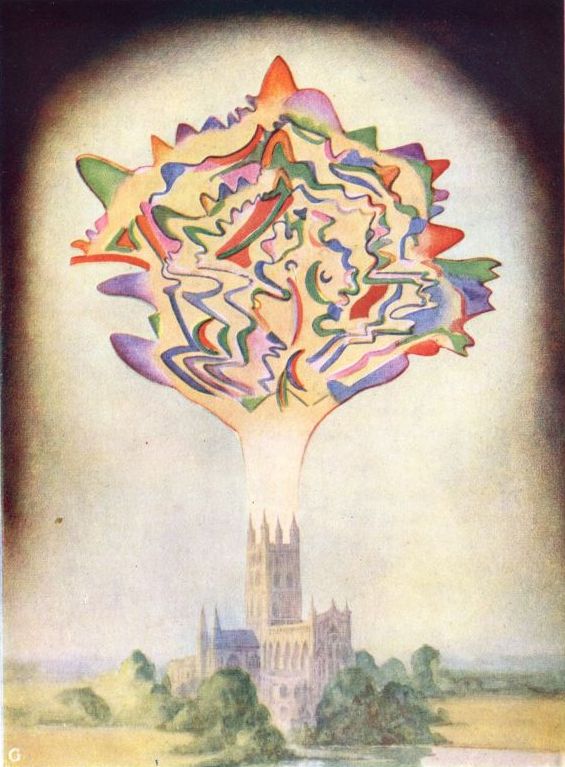
The Music of Gounod, from Thought-Forms, by Annie Besant & C.W. Leadbeater
—
Cerberus. Most people know Cerberus as the three-headed dog who guards Hades — both keeping the living out and the dead in. While the idea of Hell’s guarddog by itself is pretty badass, most representations forget that Cerberus (like so many mythological Greek monsters) is a hodgepodge of other animal parts: He has the claws of a lion, a mane made out of snakes, and a serpent’s tail. Cerberus was the offspring of Typhon and the Chimera, which are both worthy entrants on this list. A few living people managed to sneak past Cerberus, with help from magic music or drugged food, but only Hercules straight-up defeated the beast.
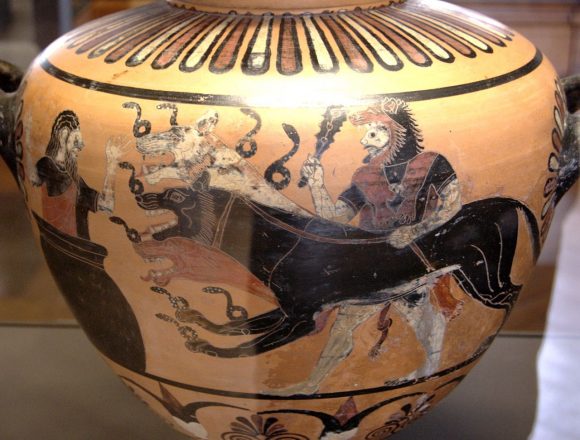
Herakles, Cerberus and Eurystheus, at the Louvre
—
Chessie. Scotland may have the Loch Ness Monster, but Charm City has its own version — Chessie. As a kid growing up in Baltimore, I always found the idea of a sea monster living in the midst of the Chesapeake Bay rather fascinating. Just as elusive as Scotland’s cryptid, Chessie’s existence has never been verified. Over the years there have been many alleged sightings, with some suggesting it could be a plesiosaur or ichthyosaur (marine dinosaurs long believed extinct) or a mutant eel. With a rash of sightings in the 1980s and only a few sightings since, the kid in me holds out hope that the sinister serpent swims beneath the sea.

—
Jekyll & Hyde. Just as werewolves represent humanity at its most savage, the strange tale of Doctor Jekyll and Mister Hyde represents mankind’s more duplicitous nature. By now, we have all heard the gothic story of how Henry Jekyll used science to separate his good self from his bad impulses. The eerie concoction that he brewed into a potion transformed him into a malevolent man without a conscience. The novella is a brilliant examination of civilization versus barbarism — and mankind’s inner struggle between nobility and savagery. Robert Louis Stevenson’s work has been homaged, remade and rebooted across every medium imaginable. While the story, in and of itself, is captivating, what I find most peculiar is the folklore that inspired the story. According to the lore, the inspiration for the legendary Edward Hyde — the novella’s villain — was one of author Robert Louis Stevenson’s drinking buddies, whose misanthropic behavior drove him to poisoning house guests and murdering his wife.
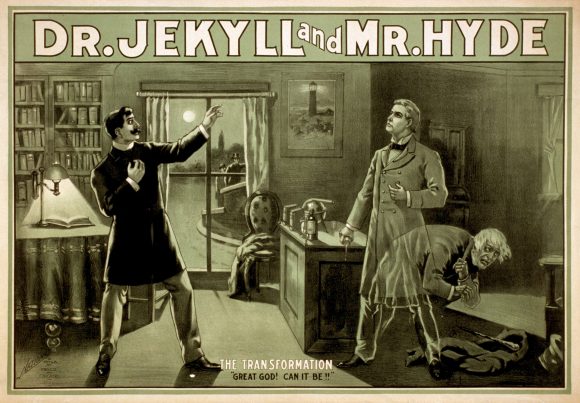
—
Hound of Ulster. The Hound of Ulster is the title given to the mythological Irish hero Cú Chulainn, whose stories are so old that they were almost forgotten before being discovered by a 7th century bard. There are hundreds of subtle variations to the folklore, but the most consistent elements of the story tell it sort of like this: As a child, the hero that would become Cú Chulainn, was groomed to be the next king. Thanks to his prowess as a young warrior, the boy’s fame spread all over Ireland and Scotland. Due to a series of unfortunate events, the young boy murdered a lord’s hound in self-defense and in doing so, inherited an epic prophesy that makes for wonderful storytelling. Cú Chulainn receives the the gift of the ríastrad — a terrifying battle frenzy that makes the Incredible Hulk look like Mr. Rogers. When confronted with insurmountable odds, Cú Chulainn transforms into a monstrous thing, hideous and shapeless, unheard of — bones erupt from his flesh, his maw distorts with jagged teeth that could snap the neck of a lion, his cheeks peel back from his face, and he attacks both friend and foe with divine fury. It’s one hell of a thing.
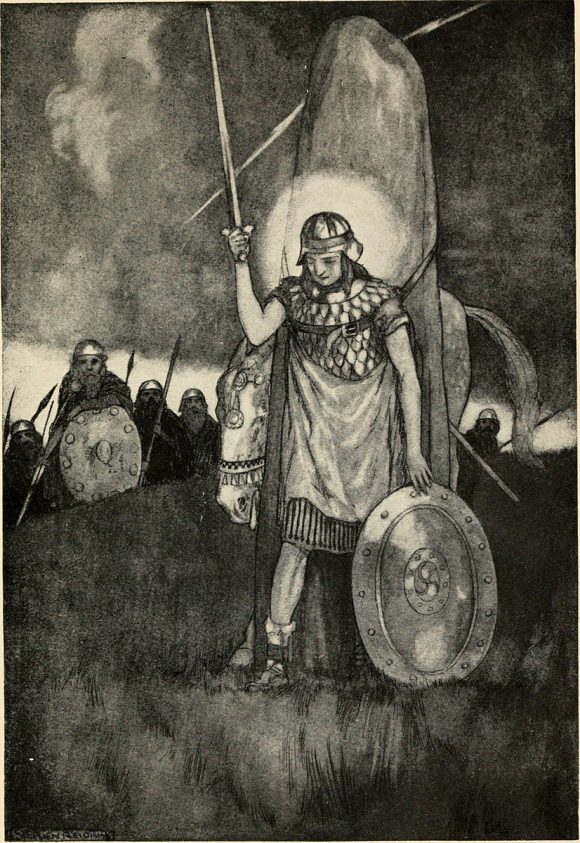
—
Raven. When I lived in Baltimore, ravens were a huge influence on our folklore and popular culture. We even have a football team named after the mythical bird in Edgar Allan Poe’s famous poem. When it came to High Moon, Steve and I looked at how we could use the iconology and folklore of ravens to add something a little more esoteric to our series. We were fascinated by how often they are associated with divinity. The first bird released by Noah following the great flood was a raven. In Irish legend, ravens are associated with warfare. The great god Odin often sends his two ravens around the world to keep him informed. All of those are incredible pieces of folklore on their own, but my favorite is from Northwest Coast mythology, where Raven is a powerful agent of change who brings fire and light into the world. Often hungry and frequently mischievous, Raven inadvertently changes the world on his continuous quest for his next meal.
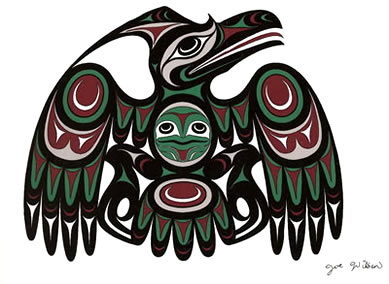
—
Lich. Gardner Fox is considered to be one of the architects of the Silver Age of comic books, but he is also responsible for one of the most sinister creatures to ever grace fantasy role-playing. Debuting in Fox’s pulp adventure The Sword of the Sorcerer, liches use their otherworldly magic to triumph over death. Cadaverous and desiccated, they hold psychic power over the hordes of the undead, radiate fear, and can paralyze their enemies with just a thought. Gary Gygax, the creator of Dungeons & Dragons, was family friends with Gardner Fox and his wife Linda and brought the creature to his legendary game. As an archaic word, the term lich was commonly used in stories by Fritz Leiber and H.P. Lovecraft; modern takes on the lich appear in the Harry Potter novels, the animated series Adventure Time, and the popular webcomic The Order of the Stick.

—
The Rougarou. You know what makes werewolves nastier? Giving them razor sharp teeth and glowing red eyes. And because swamps aren’t scary enough by themselves…giving them a little home on the bayou seems like a good idea too, right? So yeah…take all of that stuff…put it together and you’ve got yourself a rougarou — a preeminent figure in Cajun folklore. Legends of the rougarou trace back to France, where normal people could undergo a gnarly transformation once they tasted their first bite of human flesh. And continuing on that cannibalistic theme…
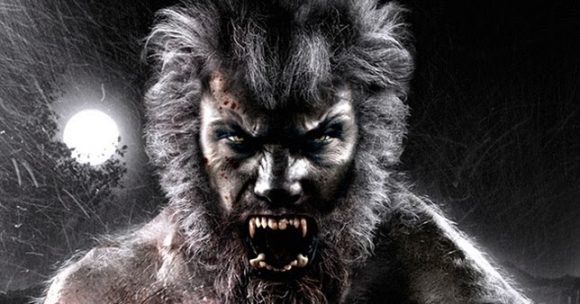
—
Wendigo. Roughly translated, the word “wendigo” means “the evil spirit that devours mankind.” Historically associated with cultural taboos against murder, this creature is insatiable. As a teen, I foolishly associated this monster with the X-Men, so I had no earthly clue how resilient it could be. Native to the northern forests of the Atlantic Coast, the wendigo appears as a 14-foot-tall humanoid monster that has an infinite hunger for flesh. Legends say that these creatures were once human beings who resorted to cannibalism in order to survive. Upon consuming the flesh of another person, their body was consumed by evil spirits that transformed them into a wendigo. Some folklore describes the beast as having huge bony antlers, a trait that allows it to slaughter its prey and endure the cruel winters.
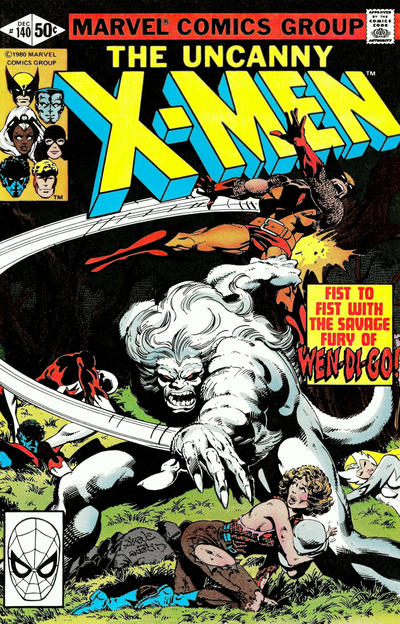
Byrne and Austin
—
Humans are infinitely diverse. Folklore is a powerful adhesive that keeps us together. These monstrous narratives give us the stories that help us make sense of our lives and our world. These tales endure because they pass the wisdom of human experience from generation to generation. As storytellers, Steve Ellis and I believe it is our responsibility to continue that tradition. We’re bringing our folk influence with us in High Moon, so if you enjoy mythic monsters and creepy creatures — you know where to find us this weekend.
High Moon Vol. 1 from Papercutz/Super Genius is available now.
